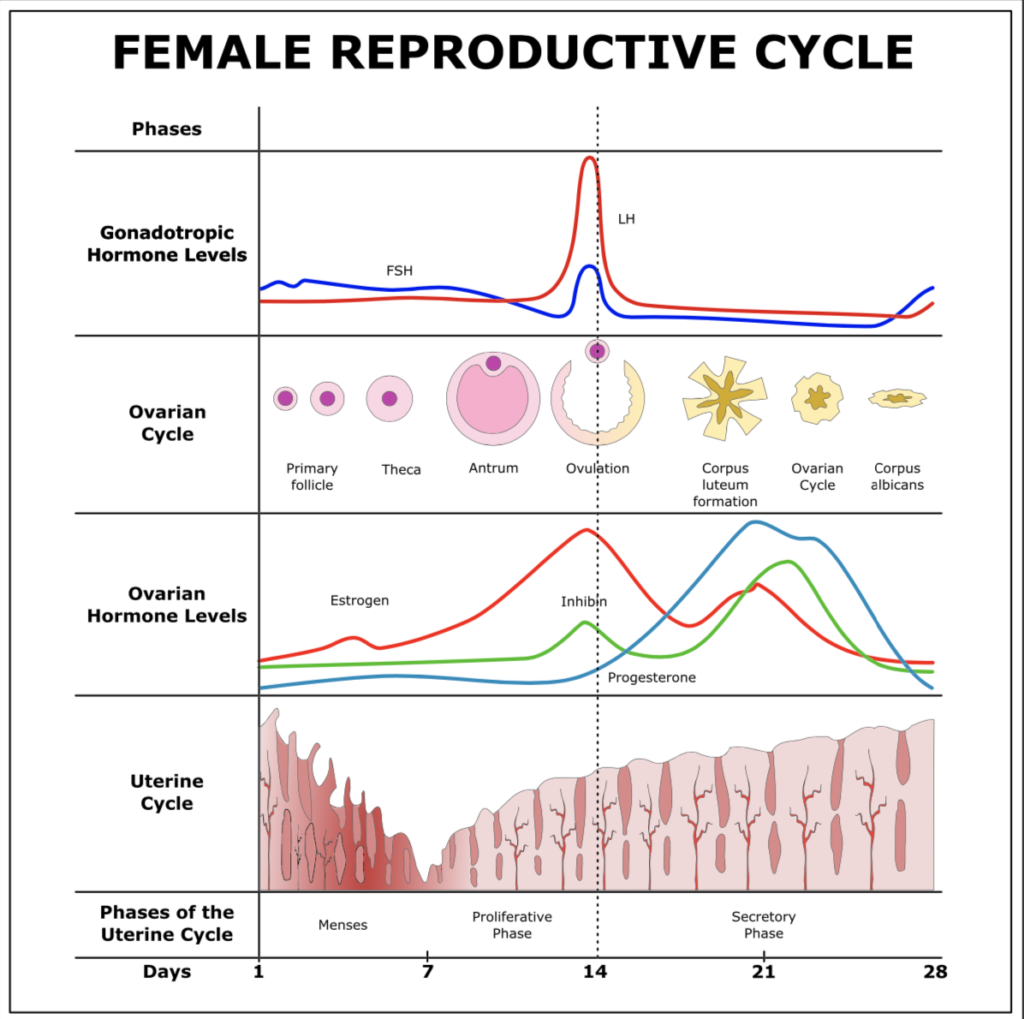
Hey pretty lady – yep, I’m talking to you. This month is all about women’s health and some of the things that I don’t think are clearly laid out for women in terms of what’s normal and what’s not about our bodies. If there are any specific questions you have, I would love to hear them and I will do my best to get them answered for you!
To kick things off I want to go through some basics about our menstrual cycles. In order to understand what’s abnormal, we first need to understand what’s normal. So here we go:
The whole premise of the menstrual cycle is to create an environment that is ready to allow for fertilization and implantation of an embryo. When that doesn’t happen, we continue throughout the cycle to our menses (aka our period). So, on the months when fertilization doesn’t occur we have 2 phases:
- Follicular phase – First day of menses to approximately day 14
- Luteal phase – Day 14 to the start of menses
In the follicular phase, we have menses and then the rising of estrogen known as the proliferative phase. (Proliferation is the rapid growth of the lining of the uterus known as the endometrium). Right before ovulation, estrogen is at its peak and there is an LH and FSH surge. The luteal phase starts right around this time. LH and FSH are hormones that are a little bit higher in the chain of command (and come from the pituitary gland in your body which is near the brain).You can think of your hormones as a factory – LH and FSH give the orders to the ovary to secrete estrogen and progesterone. As you can see by the diagram, as soon as the FSH and LH surge, the progesterone isn’t far behind it. LH is the hormone that is commonly tested to see if a woman is ovulating. When ovulation occurs the egg is released from the ovary and travels down the fallopian tube where it is ready to be fertilized by the sperm.
If there is no sperm to fertilize the egg, this triggers the decrease of progesterone and the onset of menstruation. Menstruation is where the endometrial layer of the uterus is shed and the cycle repeats all over again.
A normal cycle lasts anywhere between 25-35 days – anything above or below that is considered abnormal.
Resources:
(1) Welt CK. Physiology of the normal menstrual cycle. WF Crowley, Jr., AB Middleman, KA Martin (Eds.). Up to Date. Updated: Apr 08, 2015.